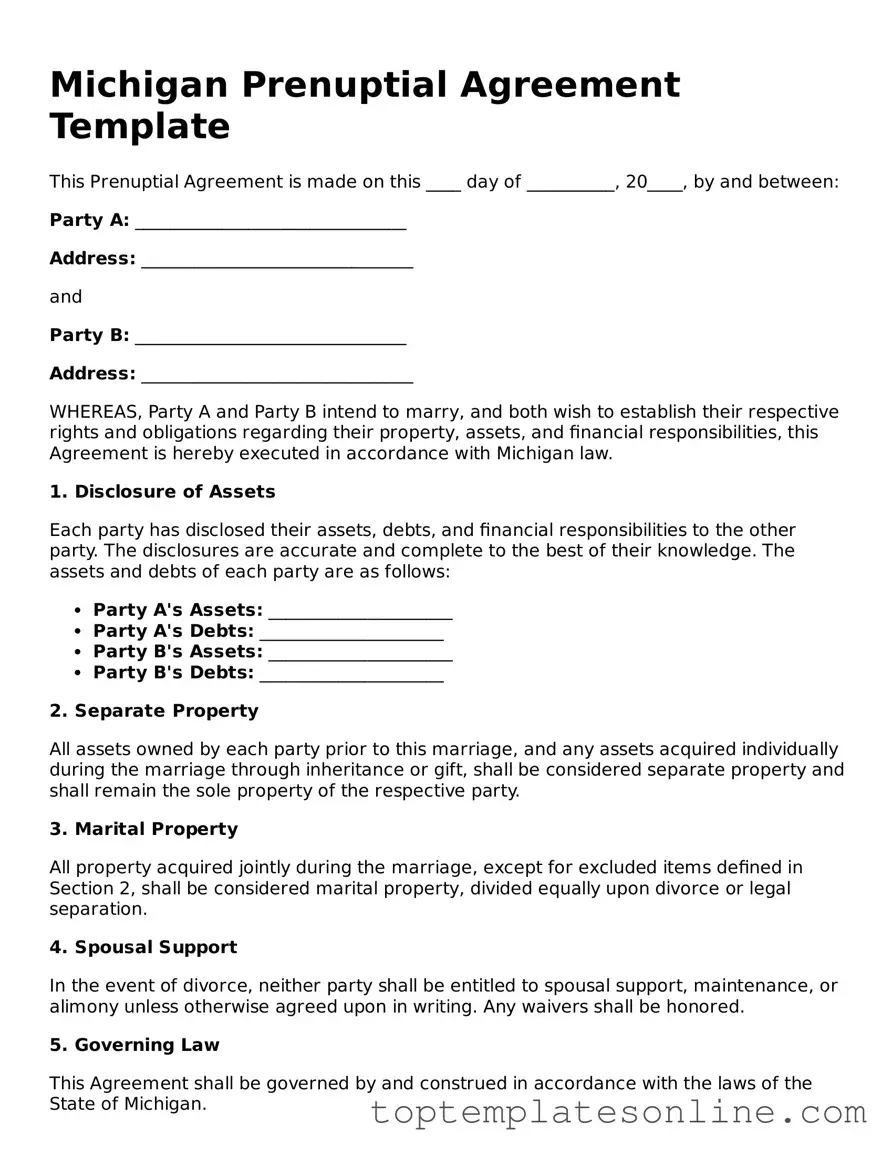Blank Prenuptial Agreement Template for Michigan State
A Michigan Prenuptial Agreement form is a legal document that outlines the rights and responsibilities of each spouse regarding property and financial matters in the event of a divorce or separation. This agreement allows couples to define their individual assets and debts before entering into marriage. By establishing clear terms, a prenuptial agreement can help prevent disputes and provide peace of mind for both parties.
Customize Prenuptial Agreement Here
